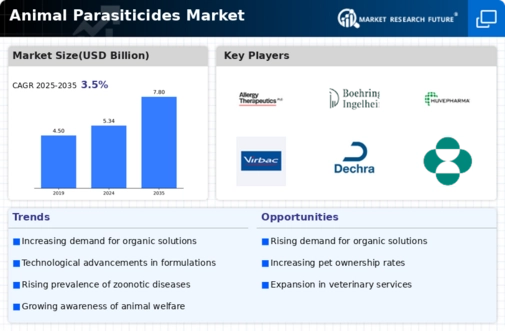Market Analysis
In-depth Analysis of Animal Parasiticides Market Industry Landscape
animal parasiticides market dynamics of sector reveal a complex interplay of factors shaping the landscape of veterinary healthcare. One of the primary drivers of this market is the increasing global concern for animal health and welfare. As the population of companion animals, livestock, and poultry continues to rise, the risk of parasitic infestations also escalates. This has led to a growing demand for effective and innovative animal parasiticides to safeguard the health and productivity of animals, driving market growth.
Government regulations and initiatives play a crucial role in shaping the dynamics of the animal parasiticides market. Stringent regulations regarding the use of parasiticides in livestock and food-producing animals, coupled with guidelines promoting responsible pet ownership, influence the development and commercialization of these products. Compliance with regulatory standards is a key consideration for manufacturers, affecting their market strategies and product offerings.
The prevalence of parasitic infections in animals is a significant market dynamic. Parasites pose a constant threat to the well-being of animals, leading to diseases that can adversely affect their health and, in the case of livestock, impact productivity. The need for effective prevention and treatment of parasitic infections creates a continuous demand for animal parasiticides across various segments of the veterinary healthcare industry.
Technological advancements and innovations in veterinary medicine contribute to the evolving dynamics of the animal parasiticides market. Ongoing research and development efforts result in the introduction of novel formulations, delivery systems, and modes of action for parasiticides. These innovations enhance the efficacy and safety of products, providing veterinarians and animal owners with a diverse range of options to address specific parasitic challenges. The adoption of advanced technologies not only improves treatment outcomes but also influences market competitiveness and growth.
Market dynamics are also influenced by the increasing awareness of zoonotic diseases. Zoonotic diseases, which can be transmitted between animals and humans, underscore the importance of controlling parasitic infections in animals. This awareness has prompted a proactive approach to animal healthcare, with a focus on preventing the spread of diseases that can have implications for both animal and human populations. The demand for effective parasiticides as a preventive measure is thus heightened, shaping market dynamics in the context of public health concerns.
Globalization and international trade contribute to the dynamics of the animal parasiticides market. The movement of animals across borders increases the risk of introducing and spreading parasitic infections. This dynamic has led to a growing emphasis on harmonized regulations and standards for the use of parasiticides in different regions. Companies operating in the market must navigate international trade regulations, regional variations in parasite prevalence, and diverse customer needs to effectively position and distribute their products.
Market consolidation and partnerships are key factors influencing the dynamics of the animal parasiticides sector. The industry has witnessed strategic collaborations, mergers, and acquisitions as companies seek to enhance their product portfolios, expand market reach, and capitalize on synergies. These strategic moves impact market competitiveness, research capabilities, and the ability to address a broad spectrum of parasitic infections, ultimately shaping the overall dynamics of the animal parasiticides market.
In conclusion, the animal parasiticides market is characterized by a dynamic interplay of factors, including the increasing awareness of animal health, government regulations, prevalence of parasitic infections, technological innovations, zoonotic disease concerns, global trade dynamics, and industry consolidation. The ongoing evolution of these factors contributes to a dynamic and competitive landscape, highlighting the importance of adaptability and innovation for companies operating in the animal parasiticides sector.

















Leave a Comment